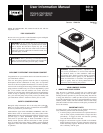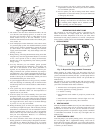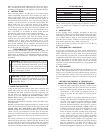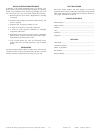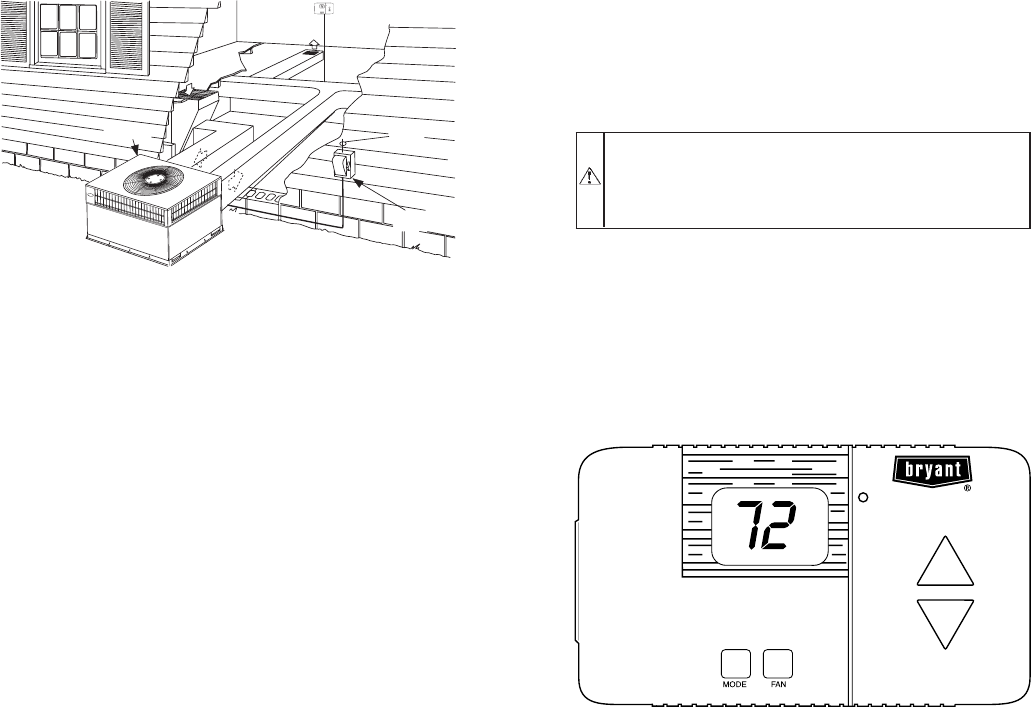
3. The outdoor unit must have unrestricted airflow. Do not
cover the unit, lean anything against it, or stand on it. Do
not allow grass clippings, leaves, or other debris to accu-
mulate around on top of the unit. Maintain a 12-in.
minimum clearance between the outdoor unit and tall grass,
vines, shrubs, etc.
4. Your multipurpose indoor thermostat is the control center
for your heat pump system. You should familiarize yourself
with its proper operation. Attempting to control the system
by other means—for instance, switching the electrical
supply power ON and OFF—may cause damage to the unit.
(See Fig. 4 and 5.)
5. During heating, increasing the thermostat setting more than
2 degrees may cause the supplemental heaters to be turned
on for a short period of time to satisfy the thermostat.
Needless use of the supplementary heat reduces potential
energy savings.
6. You may find that you can maintain greater personal
comfort by running the fan continuously. “Air pockets” can
form due to the structure of the house, placement of
registers, etc. air pockets may be too cool or warm for your
liking. Continuous fan operation minimizes any tempera-
ture differences. Also, systems equipped with electronic or
mechanical air cleaners and/or humidifiers offer the added
benefits of having the air continuously cleaned year-round
and humidified during the winter season.
7. A system equipped with a heat or energy recovery ventilator
offers the advantage of exhausting stale air from the home
and allowing fresh air in from the outdoors while minimiz-
ing heat loss.
8. Your system may also be equipped with a zoning system
which allows individual control over the temperatures of
separate areas of your home.
9. Your heat pump will remove humidity from your home
during the cooling season. After a few minutes of operation,
you should be able to see water trickle from the condensate
drain. Check this occasionally to be sure the drain system is
not clogged. Of course, don’t expect to see much drainage
if you live in a very dry environment.
10. During the heating cycle, air from your registers may seem
cooler than you might first expect. This is because your heat
pump delivers a constant flow of air at around 90˚F to 105˚F
instead of sudden bursts of hot air as with a conventional
furnace. This air may feel cooler because it is slightly less
than your skin temperature. However, it is sufficiently
warm to keep you comfortable.
11. Ice or frost will tend to form on the coil during the winter
heating operation. Your heat pump is designed to automati-
cally melt the ice. When in this defrost cycle, it is normal
for steam or fog to rise from the outdoor unit. Do not be
alarmed!
12. Do not operate your unit in cooling mode when outdoor
temperaturesarebelow40˚Funlessyourunitwasmodified
for low-ambient operation.
13. Do not operate your unit in heating mode when outdoor
temperatures are above 66˚F unless you set your thermostat
to emergency heat mode.
WARNING: To prevent serious injury, death, or prop-
erty damage, read and follow all instructions and warn-
ings, including labels shipped with or attached to unit
before operating your new heat pump.
OPERATING YOUR HEAT PUMP
The operation of your heat pump system is controlled by the
indoor thermostat. You simply adjust the thermostat and it
maintains the indoor temperature at the level you select. Most
thermostats for heat pump systems have 3 controls: a temperature
control selector, a FAN control, and a SYSTEM or MODE control.
I. COOLING MODE
When operating in cooling mode, your heat pump will run in
cooling mode until the indoor temperature is lowered to the level
you have selected. On extremely hot days, your heat pump will run
for longer periods at a time and have shorter “off” periods than on
moderate days.
The following are typical conditions that add extra heat and/or
humidity to your home. Your heat pump will work longer to keep
your home comfortable under these conditions:
1. Entrance doors are frequently opened and closed
2. Laundry appliances are being operated
3. A shower is running
4. More than the usual number of people are present in the
home
5. More than the normal number of electric lights are in use
6. Drapes are open on the sunny side of the home
II. HEATING MODE
With the SYSTEM or MODE control of your indoor thermostat set
to HEAT, your heat pump will run in heating mode until room
temperature is raised to the level you have selected. Of course,
your heat pump will have to operate for longer periods to maintain
a comfortable environment on cooler days and nights than on
moderate ones.
III. SUPPLEMENTAL HEAT
Your heat pump is your primary heating source. Your system may
also be equipped with a supplemental heating source such as
electric heat. On cold days and nights, your system will automati-
cally turn on the supplemental heat in order to maintain the level
of comfort you have selected.
Fig. 2—Typical Installation
INDOOR
THERMOSTAT
DISCONNECT
PER NEC
FROM
POWER
SOURCE
RETURN
AIR
TOP COVER
Fig. 3—Bryant Non-Programmable Thermostat
—2—



